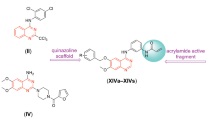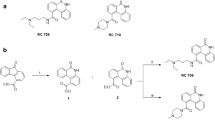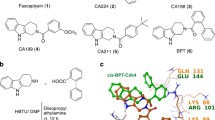Abstract
Rotaxanes comprise a class of interlocked molecules containing a wheel threaded onto an axle with blocking groups on the ends to keep the wheel from sliding off. Here, we show that [2][bis(2-(3,5-dimethylphenylcarbonyloxy)ethyl) ammoniumtrifluoromethanesulfonate]-[dibenzo-24-crown-8] rotaxane (TRO-A0001), a rotaxane compound, exerted a growth inhibitory effect on several human cancer cell lines. An MTT assay revealed an IC50 of 14-830 nM for TRO-A0001 in these cells. Neither the wheel nor the axle part alone inhibited tumor cell growth, suggesting that the complete rotaxane molecule with its unique “intramolecular mobility” is required to inhibit cell growth. Annexin-V/PI staining provided evidence of the induction of apoptosis, which was further confirmed by the observation of poly (ADP-ribose) polymerase cleavage. Furthermore, a cell cycle analysis using flow cytometry showed that TRO-A0001 treatment resulted in G1 arrest in glioblastoma T98G and melanoma G361 cells. An immunoblot analysis revealed that in both cell lines, TRO-A0001 treatment caused the induction of p21/Cip1, thereby down-regulating Cdks 2, 4 and 6 and reducing Cyclins D1 and E. The results presented in this study demonstrate cytotoxicity of the rotaxane compound and its potential as a lead compound for the development of a chemotherapeutic agent against cancer.






Similar content being viewed by others
References
Balzani VV, Credi A, Raymo FM, Stoddart JF (2000) Artificial molecular machines. Angew Chem Int Ed 39:3348–3391
Bao X, Isaacsohn I, Drew AF, Smithrud DB (2006) Determining the intracellular transport mechanism of a cleft-[2]rotaxane. J Am Chem Soc 128:12229–12238
Carlson B, Lahusen T, Singh S, Loaiza-Perez A, Worland PJ, Pestell R, Albanese C, Sausville EA, Senderowicz AM (1999) Down-regulation of cyclin D1 by transcriptional repression in MCF-7 human breast carcinoma cells induced by flavopiridol. Cancer Res 59:4634–4641
Chambron JC, Sauvage JP, Mislow K, De Cian A, Fischer J (2001) A [2]catenane and a [2]rotaxane as prototypes of topological and Euclidean molecular “rubber gloves”. Chemistry 7:4085–4096
Fujita Y, Islam R, Sakai K, Kaneda H, Kudo K, Tamura D, Aomatsu K, Nagai T, Kimura H, Matsumoto K, de Velasco MA, Arao T, Okawara T, Nishio K (2012) Aza-derivatives of resveratrol are potent macrophage migration inhibitory factor inhibitors. Invest New Drugs 30:1876–1878
Hara K, Beppu T, Kimura M, Fujita Y, Takata T, Nishio K, Ono N (2013) Influence of novel supramolecular substace, [2]Rotaxane, on the caspase signaling pathway in melanoma and colon cancer cells in vitro. J Pharmacol Sci 122:153–157
Jain RK (2005) Normalization of tumor vasculature: an emerging concept in antiangiogenic therapy. Science 307:58–62
Kihara N, Koike Y, Takata T (2007) Effect of steric Barrier on the shuttling of rotaxane having crown ether wheel. Chem Lett 36:208–209
Kimura M, Makio K, Hara K, Hiruma W, Fujita Y, Takata T, Nishio K, Ono N (2014) A supramolecular substace, [2]Rotaxane, induces apoptosis in human Molt-3 acute lymphoblastic leukemia cells. Drug Res. doi:10.1055/s-0034-1395628
Malik A, Afaq F, Sarfaraz S, Adhami VM, Syed DN, Mukhtar H (2005) Pomegranate fruit juice for chemoprevention and chemotherapy of prostate cancer. Proc Natl Acad Sci USA 102:14813–14818
Padera TP, Stoll BR, Tooredman JB, Capen D, di Tomaso E, Jain RK (2004) Pathology: cancer cells compress intratumour vessels. Nature 427:695
Pavletich NP (1999) Mechanisms of cyclin-dependent kinase regulation: structures of Cdks, their cyclin activators, and Cip and INK4 inhibitors. J Mol Biol 287:821–828
Shi J, Xu Y, Wang X, Zhang L, Zhu J, Pang T, Bao X (2015) Synthesis and evaluation of a novel Rhodamine B pyrene [2] rotaxane as an intracellular delivery agent for doxorubicin. Org Biomol Chem 13:7517–7529
Tanaka K, Arao T, Maegawa M, Matsumoto K, Kaneda H, Kudo K, Fujita Y, Yokote H, Yanagihara K, Yamada Y, Okamoto I, Nakagawa K, Nishio K (2009) SRPX2 is overexpressed in gastric cancer and promotes cellular migration and adhesion. Int J Cancer 124:1072–1080
Uemura T, Moritake K, Akiyama Y, Kimura Y, Shingu T, Yamasaki T (2002) Experimental validation of deuterium oxide—mediated antitumoral activity as it relates to apoptosis in murine malignant astrocytoma cells. J Neurosurg 96:900–908
Wang X, Smithrud DB (2011) Pt-rotaxanes as cytotoxic agents. Bioorg Med Chem Lett 21:6880–6883
Yun JM, Kweon MH, Kwon H, Hwang K, Mukhtar H (2006) Induction of apoptosis and cell cycle arrest by a chalcone panduratin A isolated from Kaempferia pandurata in androgen-independent human prostate cancer cells PC3 and DU145. Carcinogenesis 27:1454–1464
Acknowledgments
This work was supported by the Grant-in-Aid for Scientific Research (C) (Grant No. 25350979) of Ministry of Education, Culture, Sports, Science and Technology of Japan. We thank Kurashimo S. and Kitayama T. for technical support and Marco A. De Velasco for critically reading the manuscript.
Author information
Authors and Affiliations
Corresponding author
Ethics declarations
Conflict of interest
All authors have no conflicts of interest to disclose.
Rights and permissions
About this article
Cite this article
Fujita, Y., Kimura, M., Sato, H. et al. Characterization of the cytotoxic activity of [2]rotaxane (TRO-A0001), a novel supramolecular compound, in cancer cells. Arch. Pharm. Res. 39, 825–832 (2016). https://doi.org/10.1007/s12272-016-0741-9
Received:
Accepted:
Published:
Issue Date:
DOI: https://doi.org/10.1007/s12272-016-0741-9




